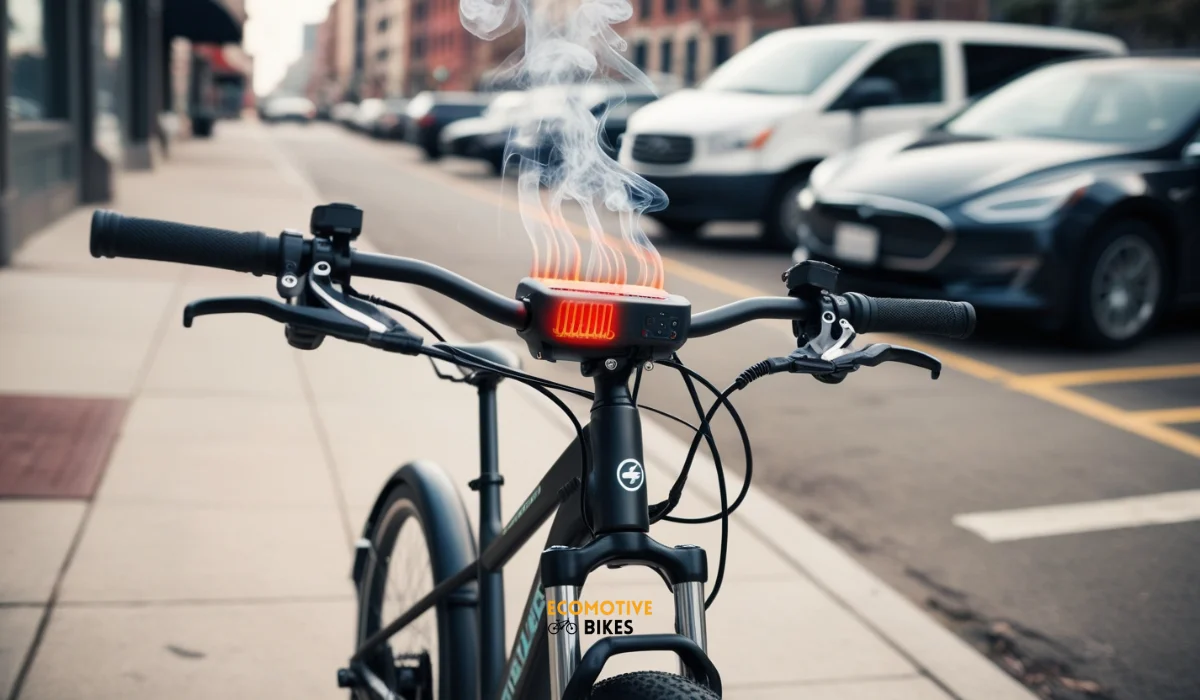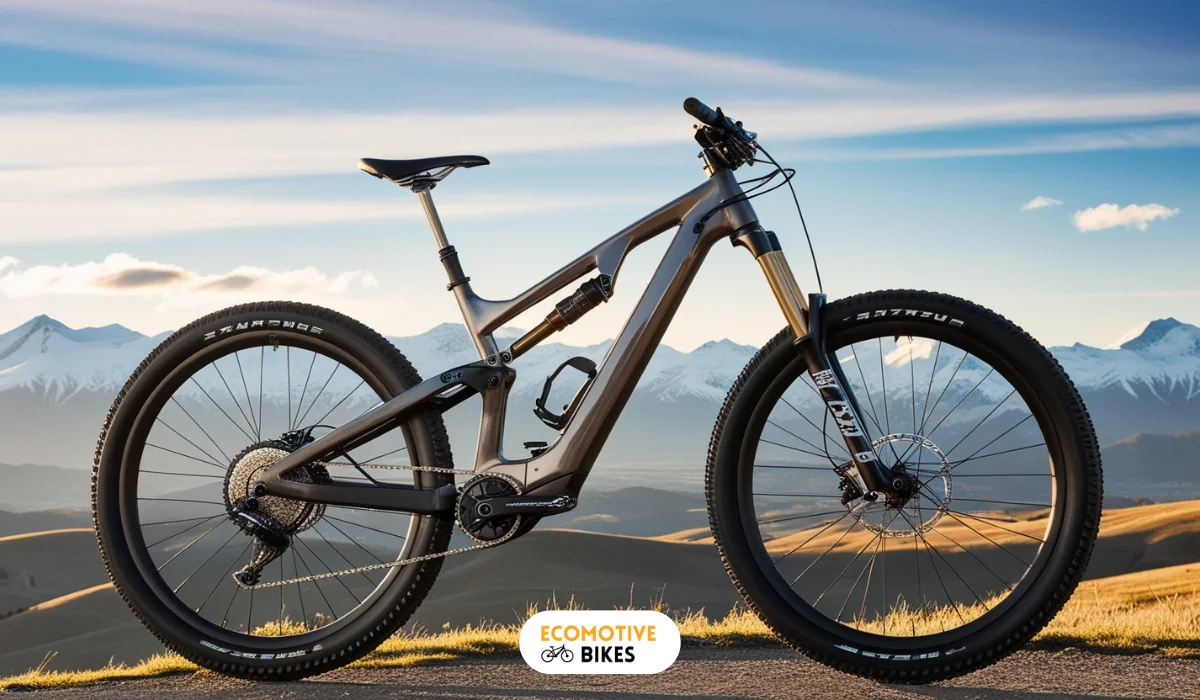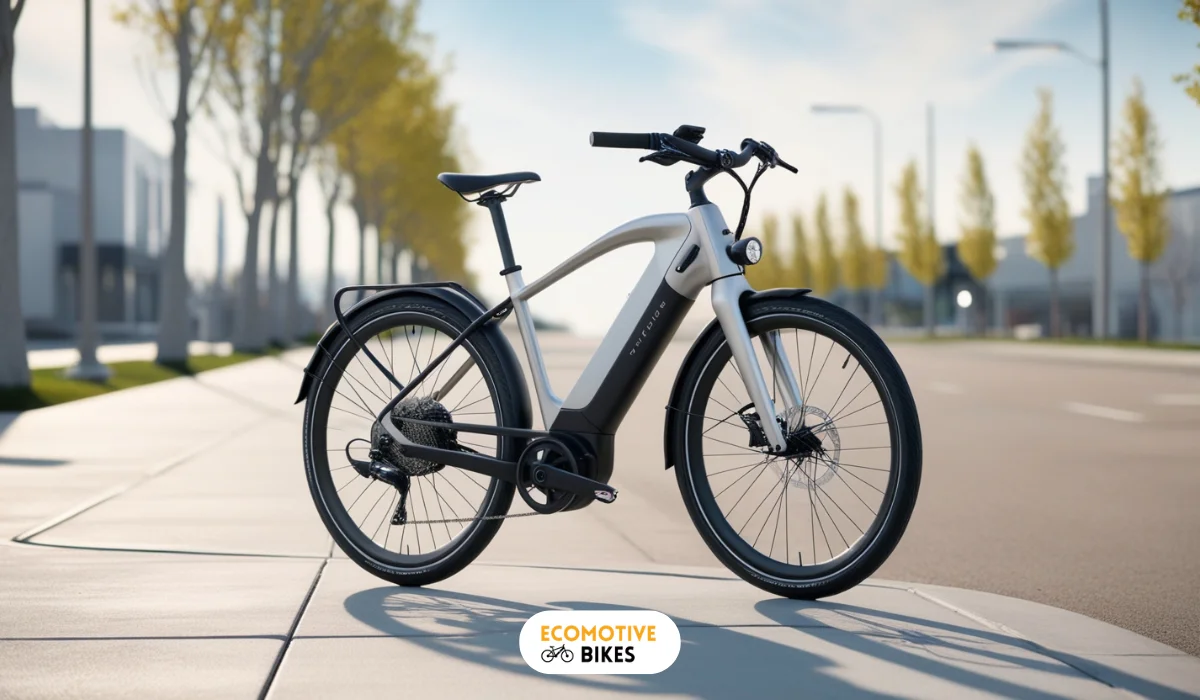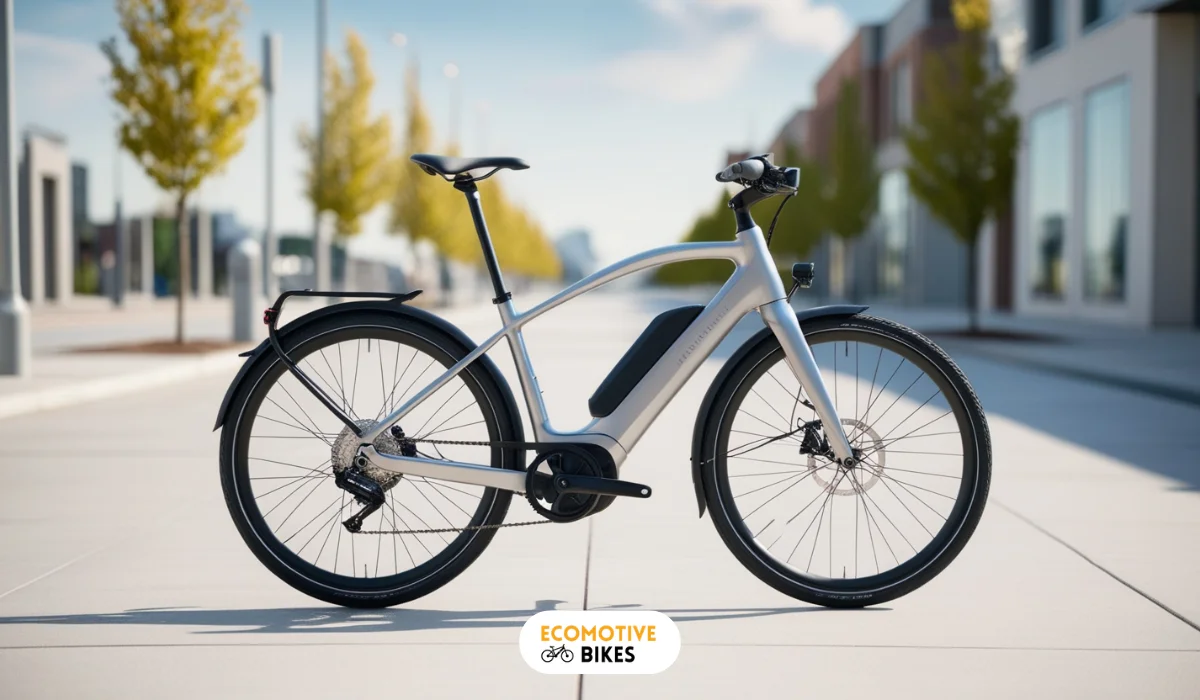How to avoid e-bike controller from overheating? 7 Tips
Learn how to avoid e-bike controller from overheating and prevent with proper ventilation, regular maintenance, and efficient power management.
Table of Contents
Related Articles:
E-bike overheating got you feeling burnt out? Don’t let a sizzling controller put a damper on your electric adventures! Overheating is not uncommon for e-bike controllers. But, how to avoid e-bike controller from overheating? This guide unveils the common culprits behind controller overheating and secrets to keeping your e-bike controller cool, calm, and collected.
So, buckle up and get ready to discover and ensure smooth, worry-free rides!

Why does the e-bike controller overheat?
Several factors can contribute to your e-bike controller overheating, turning your joyride into a scorching surprise. Here are the key culprits to watch out for:
- Soaking up the sun: High ambient temperatures can significantly raise the overall heat within your e-bike, putting components like the controller at risk of overheating.
- Hauling heavy loads: Adding extra weight, whether groceries or cargo, puts a greater strain on your motor and battery. This increased workload translates to more heat generation, upping the overheating risk.
- Conquering hills at speed: Scaling steep inclines or cruising at high speeds puts a similar strain on your motor and battery. This extra effort translates to more heat, potentially causing your controller to overheat.
Remember, these factors often work together. Imagine tackling a steep hill on a hot day while loaded down with gear – a recipe for overheating! Being aware of these potential hazards allows you to take preventative measures and ensure a smooth, worry-free ride.
Related: How to upgrade ebike controller?
How to identify the source of the overheating problem in ebike controllers?
Identifying the source of overheating in an e-bike controller requires a systematic approach. Here are the key steps to help troubleshoot:
1. Check for external factors
- Ambient Temperature: High environmental temperatures can contribute to controller overheating. Check if the weather conditions or the riding environment (e.g., direct sunlight or riding uphill for long periods) are factors.
- Ventilation: Ensure that the controller is mounted in a well-ventilated location where air can flow freely to cool it down.
2. Inspect wiring and connections
- Loose or Corroded Connections: Loose, damaged, or corroded wires increase resistance, which generates heat. Check the connections between the battery, motor, and controller.
- Short Circuits: A short in the wiring can overload the controller. Inspect the wiring harness for signs of wear or exposed wires.
3. Motor issues
- Overloading the Motor: Using the wrong motor for the terrain or riding conditions (e.g., a motor rated for flat surfaces being used for hilly terrain) can stress the controller and lead to overheating.
- Stuck or Overloaded Bearings: If the motor bearings are stuck or worn out, the motor will work harder, causing the controller to overheat.
4. Battery mismatch or problems
- Battery Voltage: Ensure the controller is paired with the correct battery voltage. Using a higher voltage battery than the controller is designed for can lead to excessive heat.
- Low Battery Charge: When the battery is low, it draws more current from the controller, causing it to heat up.
- Faulty Battery: A damaged or malfunctioning battery can send irregular voltage, stressing the controller.
5. Overcurrent or overvoltage protection
- Incorrect Current Limits: The controller might be set to allow too much current to flow, exceeding the motor’s capacity. Lowering the current settings in the controller could reduce overheating.
- No Protection Circuit: Some controllers lack adequate protection circuits. Upgrading to a controller with better thermal protection can help prevent overheating.
6. Controller design issues
- Heat Sink: Check if the controller has a proper heat sink. Controllers without adequate heat dissipation systems may overheat, especially under heavy loads.
- Controller Rating: The controller might not be rated for the power the motor is drawing. If you’re using an underpowered controller for a high-powered motor, it will heat up quickly.
7. Firmware or software settings
- Incorrect Parameters: Incorrectly configured firmware settings such as throttle response, power output, or regenerative braking can cause the controller to work harder than necessary, leading to overheating.
8. Environmental load
- Continuous Heavy Load: Prolonged uphill riding, carrying heavy loads, or frequent acceleration and braking can increase the strain on the controller, leading to heat build-up.
Final Steps:
- Test in Controlled Conditions: Try riding the bike on flat terrain at a moderate pace to observe if the controller still overheats. If it doesn’t, the issue may be related to the motor load or terrain.
- Use a Diagnostic Tool: Some e-bikes or controllers come with diagnostic tools or software that can read error codes or track temperature data. This can help pinpoint overheating causes.
If none of these troubleshooting steps resolve the issue, it may be necessary to replace the controller.
Overheating risks
For the Ebike controller, overheating could pose risks if not addressed promptly. Overheating may not be immediately dangerous, but long-term exposure to high temperatures can lead to malfunctions. It is crucial to identify the signs of overheating such as excessive heat emanating from the controller.
Related: How does ebike controllers work?
How to avoid overheating of the controller?
Regular maintenance of the controller is vital to prevent overheating and extend the lifespan of your electric bike. By following these simple steps and investing in necessary upgrades, you can enjoy a smooth and safe riding experience without worrying about overheating issues.
1. Upgrade to a more powerful controller
In cases of persistent overheating, a strategic upgrade to the e-bike controller can be a viable solution. Selecting a controller with a higher wattage rating offers increased power handling capabilities, allowing it to manage demanding situations without succumbing to thermal overload.
2. Change the transistors of the controller
Transistors of the e-bike controller, which function as miniature switches that regulate current flow, play a vital role in overheating. During operation, these transistors can themselves generate heat. If these components exhibit signs of looseness, firmly secure them and if any damage, replace them immediately.
Therefore, it’s essential to monitor their temperature and ensure they are not contributing to the overall overheating issue.
3. Install one or replace the erratic cooling system
Consider implementing a cooling system if your controller currently lacks one, or replacing a malfunctioned system with a powerful one.
4. Controller location
An efficient way to prevent controller overheating is to check the location of the controller. Controllers located with adequate air passages or with sufficient airflow are less likely to overheat, they cool properly compared to those enclosed lacking proper ventilation, or poorly positioned.
5. Proper ventilation
Maintaining proper airflow around your e-bike controller is crucial for keeping it cool and preventing overheating. Regularly inspect the controller’s placement on your bike’s frame, ensuring it’s not obstructed by any components or accessories that might restrict air circulation.
For optimal cooling, prioritize riding at moderate speeds, as this promotes continuous airflow through the controller. Additionally, consider incorporating cooling enhancements. Options include installing a dedicated cooling fan, which actively draws away heat. Alternatively, a heat sink can be attached to the controller’s exterior. These passive heat conductors absorb and dissipate heat generated by the controller, effectively lowering its operating temperature. By implementing these strategies, you can ensure your controller remains cool and functions optimally for extended periods.
Note that these upgrades often necessitate disassembly of the controller. If you lack the confidence to perform this step yourself, seeking assistance from a qualified e-bike technician is highly recommended.
6. Avoid motor overheating
A crucial aspect of e-bike maintenance is monitoring motor temperature. Overheating can lead to malfunctions, so staying informed is key. Remember, rough terrain like sand or gravel increases motor strain. However, short bursts of high load are unlikely to cause damage. The real risk lies in sustained pressure.
Typically, it takes 20 minutes of constant load for the motor to reach critical temperatures exceeding 200°F. So, for extreme cycling enthusiasts, here’s a golden rule: after extended periods of high load, take a 10-15 minute break to allow the motor to cool down. This simple practice can significantly increase the lifespan and reliability of your e-bike motor.
7. Proper tire inflation
Don’t underestimate the impact of tire inflation on your e-bike’s motor. Riding with a flat tire creates additional stress for the motor as it works harder to maintain speed. This unnecessary strain can contribute to overheating. For a smooth, efficient ride, and to avoid putting undue stress on your motor, always ensure your tires are properly inflated before venturing out on rough terrain.
FAQs about overheating of e-bike controller
How warm does a 1000W e-bike controller get?
A 1000W e-bike controller can get pretty warm, even in normal use. It shouldn’t be too hot to touch briefly (ideally under 60°C or 140°F), but it will be noticeably warm. It shouldn’t be so hot that you can’t touch it for a second, but it will definitely be warmer than room temperature.
Final Word: How to avoid e-bike controller from overheating?
E-bike overheating can cast a shadow over your electric adventures. But fear not fellow riders! By embracing the tips explored in this guide, you’ve become a master of thermal management. Remember, maintaining optimal airflow, monitoring motor temperature, and strategically utilizing cooling solutions empower you to conquer any climb without pushing your controller to its limits.
So, with this newfound knowledge, hit the road with confidence, knowing your e-bike is prepared to handle whatever terrain you throw its way. Happy riding, and keep it cool!





